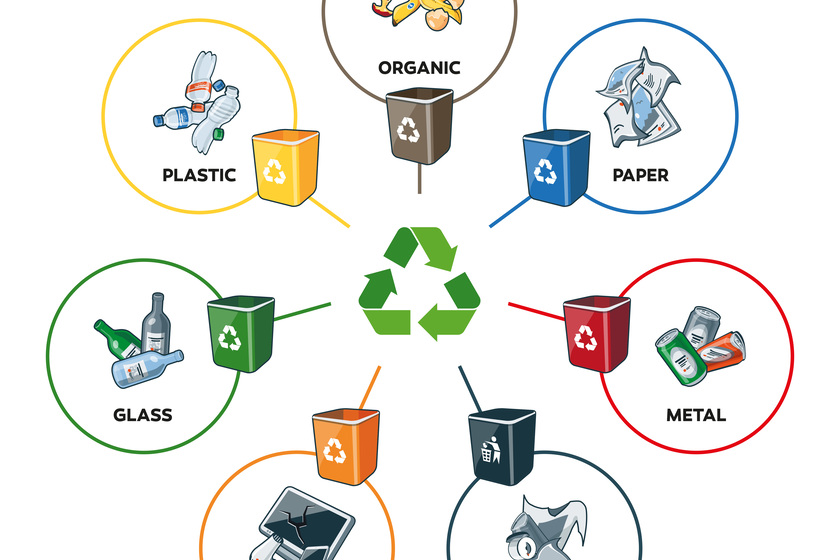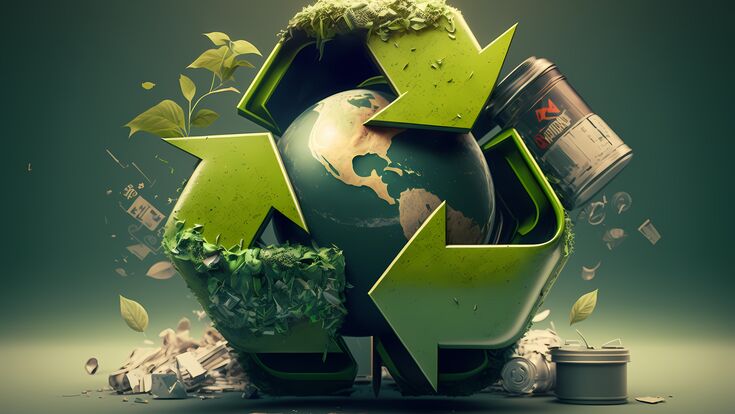Recycling Lives Services: Blazing A Trail in Liable Recycling
Recycling Lives Services: Blazing A Trail in Liable Recycling
Blog Article
Exploring Different Sorts Of Waste in Modern Waste Management Equipment
The modern landscape of waste management involves browsing a complicated range of waste types, each calling for specialized handling and disposal methods to minimize environmental effects. Local strong waste, harmful waste, electronic waste, and organic waste each existing distinct challenges and possibilities for source recovery.
Community Strong Waste
Community solid waste, frequently described as house trash or waste, includes a selection of thrown out materials created by household, business, and institutional sources within a town. This waste stream commonly includes things such as packaging, food scraps, yard trimmings, paper, plastics, fabrics, and disposed of household products. The administration of local solid waste is a crucial element of city preparation and public health and wellness, necessitating effective collection, transport, and disposal systems.
Effective waste administration systems are made to reduce environmental influence while making the most of source recovery. This commonly entails a mix of approaches including landfilling, composting, and recycling. Recycling programs target materials like paper, glass, metals, and specific plastics, diverting them from land fills and reintroducing them into the manufacturing cycle. Composting organic waste, such as food scraps and yard trimmings, not only lowers garbage dump use but additionally produces beneficial dirt modifications.
Municipalities should additionally resolve the logistical and economic challenges related to waste administration. Executing pay-as-you-throw systems, boosting public awareness, and buying technology can substantially boost waste diversion rates. By integrating these practices, municipalities can foster sustainable communities, reduce greenhouse gas exhausts, and preserve natural deposits.
Contaminated Materials

Reliable harmful waste administration entails a number of essential steps: identification, therapy, segregation, and disposal. Segregation ensures that dangerous materials are stored separately from non-hazardous waste to prevent cross-contamination.
Regulatory frameworks, such as the Resource Preservation and Recuperation Act (RCRA) in the USA, give guidelines and criteria for unsafe waste administration. Adherence to these policies, combined with innovations in waste therapy innovations, is necessary in reducing the threats related to contaminated materials.
Electronic Waste
Electronic waste, commonly referred to as e-waste, stands for a rapidly growing difficulty in waste monitoring systems around the world. This type of waste encompasses thrown out digital tools and equipment such as smart devices, computers, tvs, and various other digital appliances. The quick speed of technical advancement, paired with lowering product life expectancies and customer demand for the latest tools, has exponentially boosted the volume of e-waste produced yearly.
E-waste is specifically problematic because of its complex make-up, typically including hazardous substances like mercury, cadmium, and lead, which position substantial environmental and health threats if not appropriately taken care of. Conversely, e-waste likewise contains beneficial products such as silver, gold, and copper, which can be recovered and recycled. The dual nature of e-waste-- both unsafe and important-- demands specialized handling, recycling, and disposal processes.
Effective e-waste monitoring entails rigorous regulatory structures, durable collection systems, and advanced recycling innovations. Public recognition and involvement are vital, as incorrect disposal methods, such as unlawful unloading and casual recycling, worsen ecological contamination and carcinogen. Enhancing e-waste administration methods is important for alleviating environmental effect and recuperating important resources in a significantly electronic globe.

Organic Waste
Organic waste, making up kitchen scraps, backyard trimmings, and farming deposits, represents check my blog a considerable section of the global waste stream. This sort of waste is eco-friendly, indicating it can be broken down by bacteria into easier organic substances. In spite of its possibility for all-natural decay, incorrect monitoring of natural waste can cause negative environmental influences, consisting of the emission of greenhouse gases such as methane, which contribute to climate adjustment.
Efficient monitoring of organic waste is crucial for decreasing these environmental effects (recycling lives services). Composting is a widely embraced method, changing organic waste right into nutrient-rich garden compost that can enhance soil health and farming productivity. Additionally, anaerobic digestion is an emerging technology that converts organic waste right into biogas, a renewable resource resource, and digestate, which can be made use of as fertilizer
Municipalities and waste administration entities need to implement robust organic waste collection and treatment programs to take full advantage of the benefits of these procedures. Public education projects can additionally play a critical duty in motivating households and companies to separate organic waste from other kinds of waste. By prioritizing the administration of natural waste, cultures Click This Link can minimize landfill use, lower greenhouse gas emissions, and develop beneficial byproducts for farming use.

Ingenious Waste Monitoring
In the realm of waste monitoring, innovative methodologies are transforming how societies handle their refuse, intending for sustainability and performance. These innovations encompass a variety of modern technologies and techniques that boost reusing rates, reduce land fill reliance, and reduced ecological impact. One noticeable advancement is the execution of wise waste bins equipped with sensors that keep an eye on fill degrees and optimize collection routes. This not just lowers gas consumption but also reduces greenhouse gas exhausts.
One more notable advancement is the fostering of waste-to-energy (WtE) innovations. By converting non-recyclable waste into functional power through procedures such as incineration and anaerobic digestion, WtE lowers garbage dump concern and offers a renewable resource source. Furthermore, developments in chemical reusing enable the failure of intricate plastics into their original monomers, enabling the creation of brand-new, top notch plastic products.
Furthermore, the circular economic situation design is obtaining grip, stressing the design of items and systems that focus on reusability and source effectiveness. click site This alternative technique motivates sectors to reduce waste generation from the start. Through these cutting-edge methods, contemporary waste management systems are not just resolving the prompt challenges of waste disposal yet additionally leading the way for an extra lasting future.
Verdict
An extensive understanding of metropolitan strong waste, contaminated materials, digital waste, and organic waste, paired with the execution of innovative waste administration remedies, is imperative for mitigating environmental effects. Integrating innovations such as wise waste containers and waste-to-energy systems can enhance performance and sustainability. Effective waste management approaches not only foster resource recuperation but also promote public recognition and engagement, inevitably contributing to the advancement of a round economic situation.
The modern landscape of waste monitoring includes browsing a complex array of waste types, each requiring specialized handling and disposal approaches to minimize environmental impacts. Local solid waste, hazardous waste, digital waste, and organic waste each existing distinctive obstacles and chances for resource healing.Electronic waste, generally referred to as e-waste, represents a quickly expanding challenge in waste management systems around the world. Through these cutting-edge methods, modern waste monitoring systems are not just resolving the instant difficulties of waste disposal but additionally leading the method for a much more sustainable future.
A thorough understanding of metropolitan solid waste, hazardous waste, digital waste, and natural waste, combined with the implementation of cutting-edge waste management solutions, is critical for reducing environmental influences. (recycling lives services)
Report this page